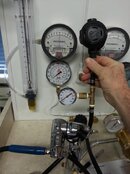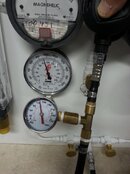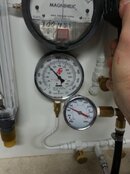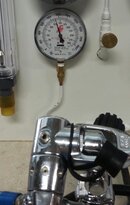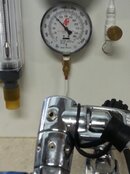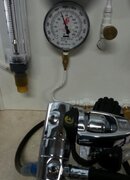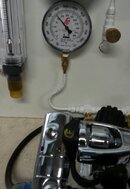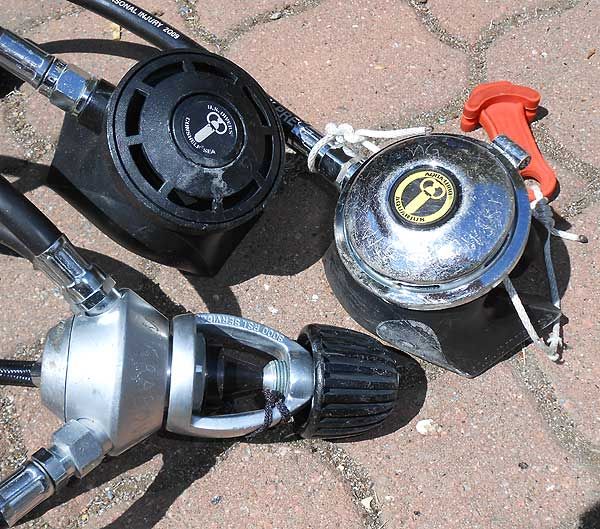reefrat
Contributor
I think Luis is right about the second stage being more important for WOB and first stage IP drop playing a bigger part than the flow rate. I seem to recall reading a number of times way back about people over-breathing regulators, particularly at depth. I have read more recently reviewers make comments about far regs have come in terms of breathing performance in the last 20 years! The curious thing is that when you look at the numbers there doesn't to be much difference.
Take for example the Conshelf first stage, I have seen the flow rate quoted as about 50 scfm and this unit has been around for nearly 40 years (AFAIK). The new Titan first stage combined with a Titan LX second stage has been described as a good breather with very good reserves for deepish diving, well turns out that (according to an Aqualung website I found) it's flow rate is 1450 L/min which equates to about 50 scfm, the same as the Conshelf. Even the new top of the line Aqualung Legend first stage is only a smidge more- under 60 scfm! The Poseidon Xstream first stage is toted as a deep technical unit- for use to 200m on trimix, it's flow rate is about 76 scfm and the older Cyclon wasn't much more than half this.
Of course we all know that Scubapro quotes huge flow rates for their first stages but does it really make any difference when the US Navy manual says that a super fit naval diver doing "severe work" uses about 1.9 to 3.5 cfm (presumably at the surface). In fact I'll bet that Scubapro's (and maybe all manufacturers) flow rates are based on the combined flow of all the low pressure ports venting simultaneously when really what counts is the flow that is delivered to the primary first stage and how little IP drop there is during the cycle. It may also be that the number of low pressure ports a first stage has (5 on the MK25 and 3 on the Conshelf) has a bearing on the flow rate figure?
Anyway, I tried out a Conshelf XIV second today on a Mares MR22 first and it worked really well- maybe the Mares DFC (first stage venturi effect) really does work, but that is probably another thread on a different forum?
Take for example the Conshelf first stage, I have seen the flow rate quoted as about 50 scfm and this unit has been around for nearly 40 years (AFAIK). The new Titan first stage combined with a Titan LX second stage has been described as a good breather with very good reserves for deepish diving, well turns out that (according to an Aqualung website I found) it's flow rate is 1450 L/min which equates to about 50 scfm, the same as the Conshelf. Even the new top of the line Aqualung Legend first stage is only a smidge more- under 60 scfm! The Poseidon Xstream first stage is toted as a deep technical unit- for use to 200m on trimix, it's flow rate is about 76 scfm and the older Cyclon wasn't much more than half this.
Of course we all know that Scubapro quotes huge flow rates for their first stages but does it really make any difference when the US Navy manual says that a super fit naval diver doing "severe work" uses about 1.9 to 3.5 cfm (presumably at the surface). In fact I'll bet that Scubapro's (and maybe all manufacturers) flow rates are based on the combined flow of all the low pressure ports venting simultaneously when really what counts is the flow that is delivered to the primary first stage and how little IP drop there is during the cycle. It may also be that the number of low pressure ports a first stage has (5 on the MK25 and 3 on the Conshelf) has a bearing on the flow rate figure?
Anyway, I tried out a Conshelf XIV second today on a Mares MR22 first and it worked really well- maybe the Mares DFC (first stage venturi effect) really does work, but that is probably another thread on a different forum?




